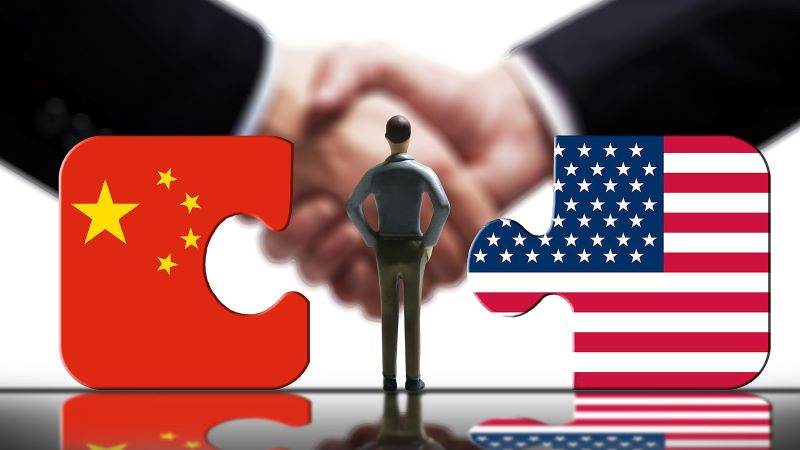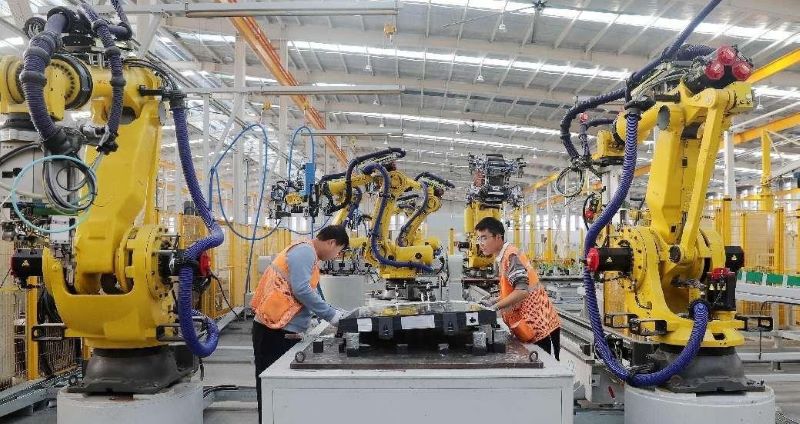China-U.S. economic, trade relations complementary, mutually beneficial

Agency : The first meeting of the China-U.S. economic and trade consultation mechanism is currently taking place in London, providing an important new opportunity for both sides to resolve differences through equal dialogue and consultation.
People from different walks of life in China and the U.S. as well as the international community expect the two countries to implement the consensus reached by the two heads of state during their recent phone call, so as to inject more certainty and stability into their respective development and the world economic recovery.
Promoting dialogue and consultation requires a rational and objective understanding of China-U.S. economic and trade relations. Over the past decades, China and the U.S. have formed a complementary and mutually beneficial economic and trade structure. The sound development of bilateral economic and trade relations has not only delivered tangible benefits to the peoples of both countries, but also made important contributions to world economic growth.
An objective analysis of data reveals that gains from economic and trade relations between China and the U.S. are generally balanced. The trade balance in goods between China and the U.S. is both an inevitable result of the structural issues in the U.S. economy and a consequence of the comparative advantages and international division of labor between the two countries.
In service trade and multinational operations, the U.S. enjoys a notable advantage. In 2024, the U.S. registered a surplus of $27.3 billion in service trade with China. In 2022, the sales revenue of the U.S.-owned enterprises in China reached $490.5 billion, significantly exceeding the $78.6 billion in sales revenue generated by Chinese-owned enterprises in the U.S. - a gap of over $400 billion. When the three factors of trade in goods, trade in services, and the local sales of domestic enterprises' branches in the other country are taken into full account, it becomes evident that neither side is at a disadvantage, nor is one exploiting the other in the bilateral economic and trade relationship.
Meanwhile, a significant portion of Chinese exports to the U.S. includes value generated through global value chains. However, current trade statistics methods calculate China's exports based on their gross value (the full value of goods exported by China to the U.S.). Calculated by the trade in value-added method, the U.S. trade deficit with China would substantially decrease.
China does not deliberately pursue a trade surplus. As a matter of fact, the ratio of China's current account surplus to GDP has decreased from 9.9 percent in 2007 to 2.2 percent in 2024. In recent years, China's share of the total U.S. deficit of trade in goods has fallen from 47.5 percent in 2018 to 24.6 percent in 2024, while the U.S. trade deficit with other countries and regions has increased substantially in the same period. In 2024, the U.S. international deficit of trade in goods reached $1.2 trillion. This once again proves that the root cause of the U.S. goods trade deficit lies in its own economic structure.
The potential for U.S. exports to China remains untapped, largely due to U.S. domestic policies. The U.S. holds a comparative advantage in high-tech industries, yet in recent years it has overstretched the concept of national security and politicized economic and trade issues. Following the China-U.S. economic and trade talks in Geneva, the U.S. introduced multiple discriminatory restrictive measures against China. These measures included issuing guidance on AI chip export controls and halting sales of chip design software to China.
These persistent restrictive measures have caused U.S. businesses to miss valuable opportunities in the Chinese market. Time and again, it has been shown that "high fences and small yards" and decoupling and supply chains disruption run counter to economic principles and hinder normal business interactions between the two countries.
China remains committed to pursuing high-level opening-up and import expansion, providing more opportunities to countries around the world, including the United States. China continues to use the major platforms such as the China International Import Expo, the Canton Fair, the China International Fair for Trade in Services, and the China International Consumer Products Expo to boost imports. It also develops national-level demonstration zones for the creative promotion of imports, steadily facilitates growth in imports, and explores more potential. The goal is to transform China's vast market into a shared global market, injecting new impetus into the world economy.
The China-U.S. economic and trade relationship is fundamentally rooted in complementarity and mutual benefits. The steady and sound development of bilateral ties hinges on dismantling man-made barriers and facilitating unimpeded, reciprocal flows in trade and economic cooperation. As the world's two largest economies, China and the U.S. can not only advance their own development through strengthened economic and trade cooperation but also play an essential role in ensuring the stability of global industrial and supply chains.
It is believed that China and the U.S. can find mutually beneficial and win-win solutions through equal dialogue and practical cooperation. It is hoped that both sides will work together to foster an enabling environment for enterprises to conduct normal business activities, thereby delivering greater benefits to the peoples of both nations and contributing more to world economic recovery and growth.
By Zhong Sheng, People's Daily (Zhong Sheng is a pen name often used by People's Daily to express its views on foreign policy and international affairs.)




2025-06-11-12-14-05.jpeg)









प्रतिकृया दिनुहोस